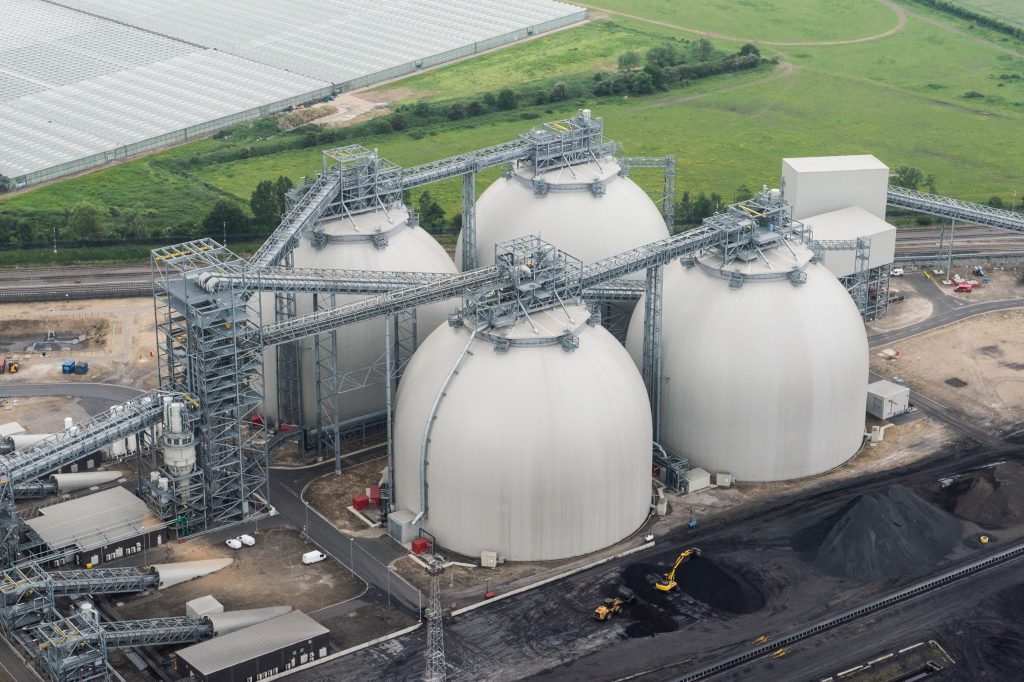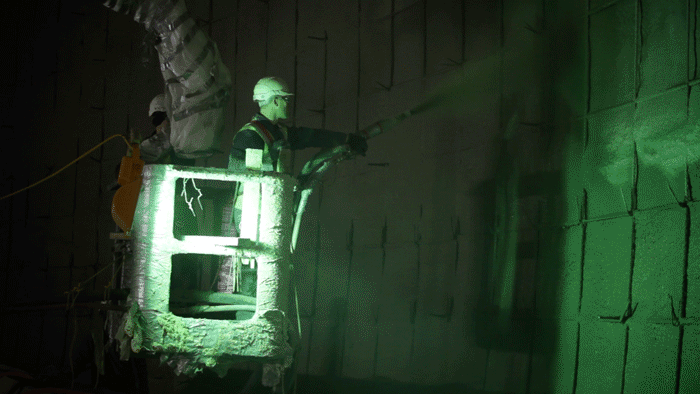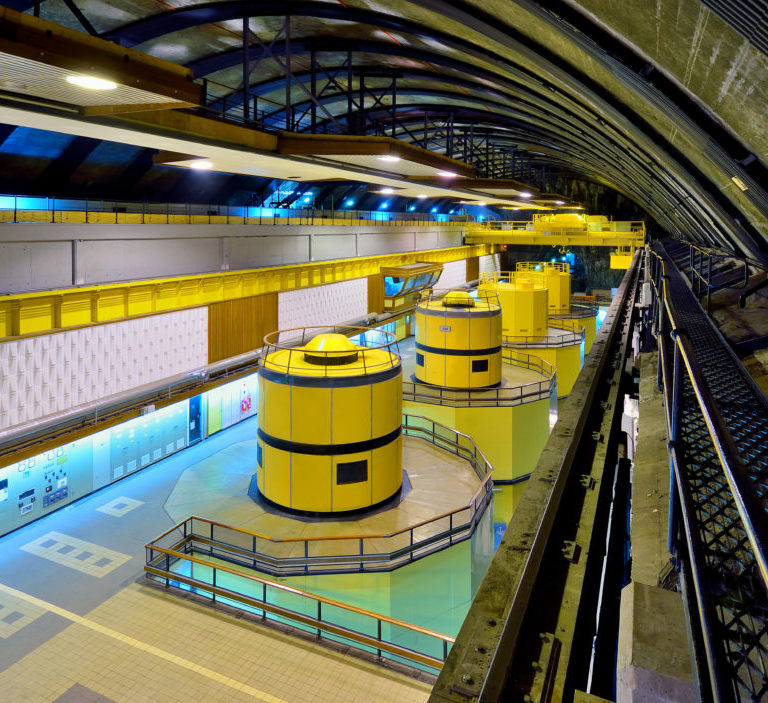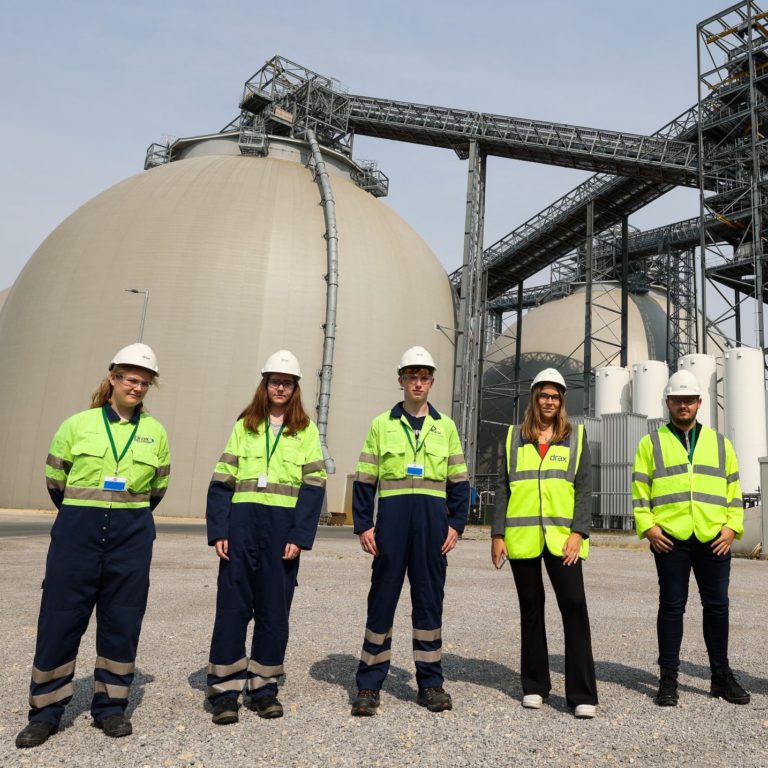For decades the most iconic sight at Drax Power Station has been its large grey cooling towers, but that’s changing. Today the most striking image on the Selby skyline is four white domes, each larger in volume than the Royal Albert Hall.
These are Drax’s biomass storage domes, standing 50 metres high and holding 300,000 tonnes of compressed wood pellets between them – enough to power Leeds, Manchester, Sheffield and Liverpool for more than 12 days.
They’re an integral part of Drax’s ongoing transition from coal to renewable biomass electricity generation. But while biomass is a far cleaner source of energy than coal – reducing carbon emissions by more than 80% – it comes with its own challenges. A key one is storage. That’s where the domes come in.
The need for a new storage space
Storing coal is a relatively simple task. With some management by heavy vehicles to reduce the occurrence of air pockets, coal can quite happily sit outside in the rain and still work efficiently as fuel. Compressed wood pellets are different. If a wood pellet gets wet it can degrade and become unusable. The main reason to compress wood into high density pellets in the first place is to take its moisture content down, saving weight for transportation and increasing its efficiency as a fuel for power station boilers.
More than that, because the biomass pellets are made from wood – a living and breathing organic material – they have to be stored in sensitively calibrated environments to keep them in a safe and usable state. Each storage dome had to be carefully designed, engineered and constructed to ensure it was fit to maintain this environment.
Construction began back in 2013 and required a Drax engineering team working closely with Idaho-based Dome Technology and York’s Shepherd Construction. At more than 50 metres tall, they’re the largest of their kind in the world – a new approach to construction had to be considered.
There were three key steps involved in the build:
Blowing up a giant balloon
The first stage is to prepare the foundation which takes the form of a massive concrete circular ring beam. A giant PVC airform dome is laid out over the ring beam and inflated using fans that are about the size of a Doctor Who telephone box, to form the outside of the dome.
Insulating the inside
With the dome still air-inflated, a thin 15mm layer of polyurethane foam is sprayed to the inside, serving to both insulate the structure and provide purchase for the first layers of steel reinforcements.
Completing the shell
Once the first steel reinforcing grid is attached to the polyurethane, the concrete spraying process begins. The dome wall is built up to a thickness of up to 350mm by adding further layers of steel reinforcement grid and reinforced concrete.
Under pressure
The challenge the team now face following construction is maintaining a safe atmosphere inside the domes. The pellets are stored inside the domes in vast quantities and weight, which collectively create high amounts of pressure. As the pressure builds up the pellets release oxygen, which can cause a build-up of heat, and potentially an explosion.
But by addressing the cause of the increase in heat – the oxygen – the team found they could limit the danger potential. The solution was a specially-designed system that releases nitrogen into the dome. The gas forms non-flammable compounds with the oxygen, which keeps the inside of the dome stable.
The Drax cooling towers are still visible in and around Selby. And while they’re still an essential part of the power station, emitting steam (not smoke) used in the generating process, they’re no longer its most iconic image. The four storage domes sitting beside them more closely represent the future of Drax: a renewable one built on biomass technology.

Now that the domes have been built, find out how their atmosphere is controlled.




















